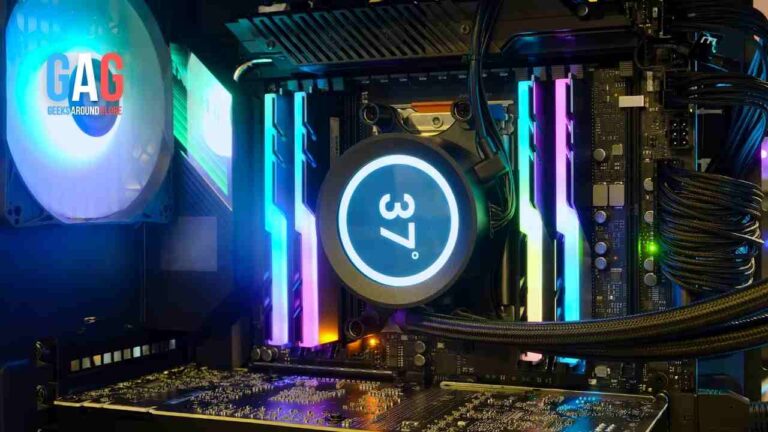- 1. Sending money through online platforms
- 2. Contactless Payments: The Rise of NFC Technology
- 3. Mobile Wallets: Revolutionizing Convenience
- 4. Blockchain and Cryptocurrencies: Decentralizing Finance
- 5. Peer-to-Peer (P2P) Platforms: Direct Connections
- 6. Artificial Intelligence (AI) and Machine Learning
- 7. Internet of Things (IoT): Connected Finances
- 8. Central Bank Digital Currencies (CBDCs)
In an era where technological advancements are reshaping the way we live, it’s no surprise that the financial industry is experiencing a significant transformation. One of the most notable shifts is in the way we send money. Traditional methods, such as bank transfers and physical currency exchanges, are gradually being replaced by cutting-edge technologies that offer speed, convenience, and enhanced security. In this comprehensive guide, we will explore the ultimate trends in technological innovations shaping the future of money sending.
Sending money through online platforms
Sending money through online platforms for free has become a game-changer in the financial landscape, offering users unprecedented convenience and cost savings. Several digital platforms, now provide users with the ability to send funds to friends, family, or businesses without incurring any transaction fees. Whether you are looking to send money to Peru for free or any other country, this fee-free model not only eliminates the financial burden traditionally associated with money transfers but also accelerates the adoption of online platforms as the preferred method for sending money.
Users can enjoy the simplicity of initiating transactions at their fingertips, fostering a seamless and affordable experience that aligns with the fast-paced, digital nature of the modern world. This evolution marks a significant shift in the accessibility and affordability of financial services, democratizing money sending for a broader audience.
Contactless Payments: The Rise of NFC Technology
Contactless payments, fueled by the advancements in Near Field Communication (NFC) technology, are gaining significant traction, especially for in-person transactions. The seamless experience of completing transactions with a simple tap or wave near an NFC-compatible terminal has propelled this technology to the forefront of modern payment solutions. Mobile devices and smart cards, equipped with NFC chips, have empowered users to make secure and swift payments, contributing to the growing popularity of contactless transactions for everyday purchases.
What makes this trend even more compelling is its expansion into person-to-person money transfers, further streamlining financial transactions. As technology evolves, the boundaries of contactless payments are pushed beyond conventional uses, promising a future where individuals can effortlessly send money to each other, reinforcing the position of NFC technology as a cornerstone in shaping the landscape of contemporary financial transactions.
Mobile Wallets: Revolutionizing Convenience
Mobile wallets, emerging as the linchpin of contemporary money transfer, streamline financial transactions through smartphones. Platforms have surged in popularity, providing users with intuitive interfaces for seamless transactions. The pivotal feature of mobile wallets is their integration of advanced security measures, including biometric authentication such as fingerprint and facial recognition.
This ensures not only convenience but also robust security, bolstering trust in digital transactions. As these wallets continue to evolve, their user-centric design and commitment to secure, effortless transactions position them at the forefront of the technological revolution in the realm of money sending.
Blockchain and Cryptocurrencies: Decentralizing Finance
Blockchain technology is a transformative force, challenging conventional financial systems by offering a decentralized and transparent alternative. Cryptocurrencies such as Bitcoin, Ethereum, and Ripple are rapidly gaining acceptance as practical tools for cross-border money transfers. The decentralized structure of blockchain guarantees enhanced security by eliminating the need for intermediaries, resulting in reduced transaction costs and quicker processing times.
This evolution is reshaping the international money transfer landscape, ushering in an era where transactions are not only more cost-effective but also executed with unprecedented speed. The increasing adoption of cryptocurrencies by businesses and individuals alike underscores the profound impact of blockchain on decentralizing finance and creating a more efficient global monetary system.
Peer-to-Peer (P2P) Platforms: Direct Connections
In the realm of money sending, Peer-to-Peer (P2P) platforms have emerged as trailblazers, fostering direct connections between users and eliminating the need for traditional intermediaries like banks. A notable example is TransferWise, now rebranded as Wise, which has gained widespread acclaim for its transparent fee structures and genuine exchange rates.
Leveraging advanced technology, P2P platforms facilitate currency exchanges by matching users directly, resulting in more favorable rates than traditional methods. This revolutionary trend is fundamentally transforming the landscape of international money transfers, providing users with a cost-effective and efficient alternative. By fostering a direct connection between senders and recipients, P2P platforms not only streamline the process but also contribute to a more democratized and inclusive financial system, where individuals can send funds globally with greater transparency and at a lower cost.
Artificial Intelligence (AI) and Machine Learning
The integration of AI and machine learning algorithms is revolutionizing the security landscape of money sending. Financial institutions are employing these technologies to detect and prevent fraudulent activities in real time. AI analyzes user behavior, transaction patterns, and other data points to identify suspicious activities, ensuring a higher level of security for both senders and recipients. As these technologies continue to advance, the risk of fraud in money sending is likely to decrease significantly.
Internet of Things (IoT): Connected Finances
The Internet of Things (IoT) is not just about smart homes and wearable devices; it is also influencing how we send money. IoT enables seamless connectivity between devices, allowing for innovative solutions like connected wallets. Smart devices can initiate money transfers based on predefined conditions or user preferences, creating a more automated and efficient financial ecosystem. This trend is poised to redefine the user experience in money sending, making it more intuitive and adaptive to individual needs.
Central Bank Digital Currencies (CBDCs)
Several central banks worldwide are exploring the concept of Central Bank Digital Currencies (CBDCs), which are digital representations of a country’s fiat currency. CBDCs aim to combine the advantages of digital transactions with the stability of traditional currencies. China’s Digital Currency Electronic Payment (DCEP) and Sweden’s e-krona are examples of nations actively developing CBDCs. The adoption of CBDCs could streamline domestic money transfers, reduce costs, and enhance financial inclusion.
As we navigate the future of money sending, these technological trends underscore a shift towards a more interconnected, efficient, and secure financial ecosystem. The days of cumbersome paperwork and slow transactions are giving way to instant, transparent, and user-centric solutions. Whether it’s through mobile wallets, blockchain, P2P platforms, contactless payments, AI, IoT, or CBDCs, the landscape of money sending is continually evolving.
To stay ahead in this dynamic environment, businesses and individuals must embrace these technological trends, adapting to the changing nature of financial transactions. As we witness the fusion of innovation and finance, the ultimate guide to technological trends in money sending serves as a roadmap for a future where financial interactions are seamless, intelligent, and accessible to all.







